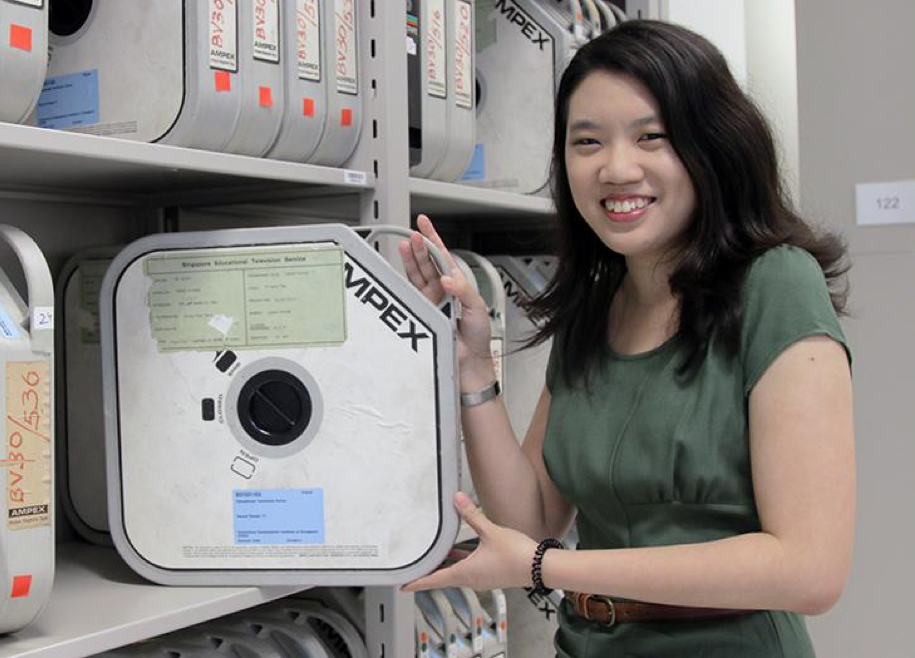The National Archives of Singapore (NAS) is celebrating its 50th anniversary in 2018.
For something to hit the big jubilee five-oh, it calls for celebration.
In line with this celebratory mood, Jessica, an audiovisual (AV) archivist is going to answer any questions we have.
Appropriate ones, of course.
1. Are you old?
As you can tell, no, not really.
2. So, the NAS building at the foot of Fort Canning Hill is old?
When we were moving out of our premises last year so that the building could undergo renovation, my older colleagues were telling stories about what it was like to move into the building 20 years ago in 1997. That was the first major upgrade for the building, which was originally the Anglo-Chinese School (Primary).
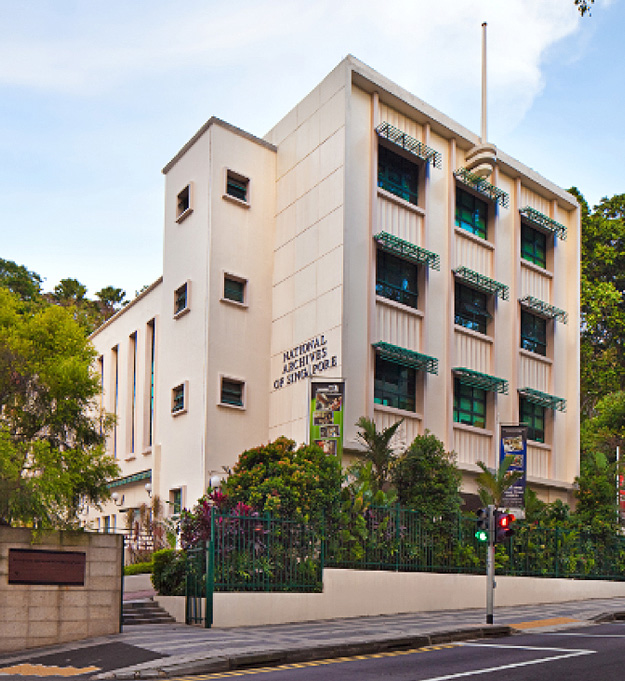 The NAS building at 1, Canning Rise was built in 1959, FYI. Its neighbours are national monuments - the Armenian Church and the Central Fire Station.
The NAS building at 1, Canning Rise was built in 1959, FYI. Its neighbours are national monuments - the Armenian Church and the Central Fire Station.
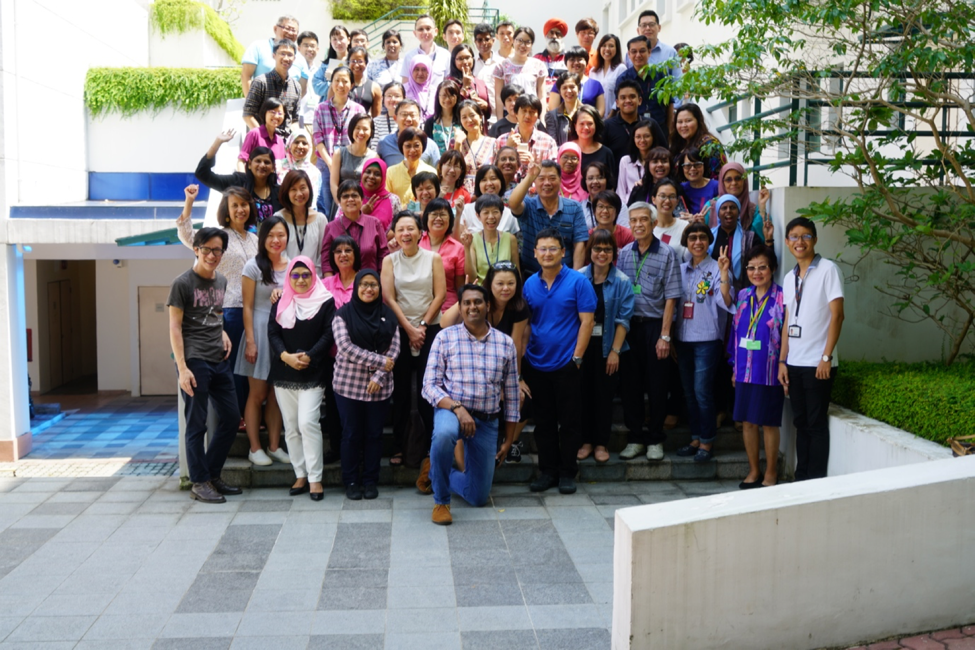 Colleagues bidding farewell to the NAS building before it undergoes renovation works.
Colleagues bidding farewell to the NAS building before it undergoes renovation works.
3. What kind of people become archivists?
Only overseas institutions offer archival studies. There are no archival courses in Singapore.
However, Nanyang Technological University's Master of Science in Information Studies does offer a module in Records Management. At NAS, a majority of the archivists are history majors. We have increasingly recruited archivists from other disciplines, such as social sciences and IT.
4. What do you do as an archivist?
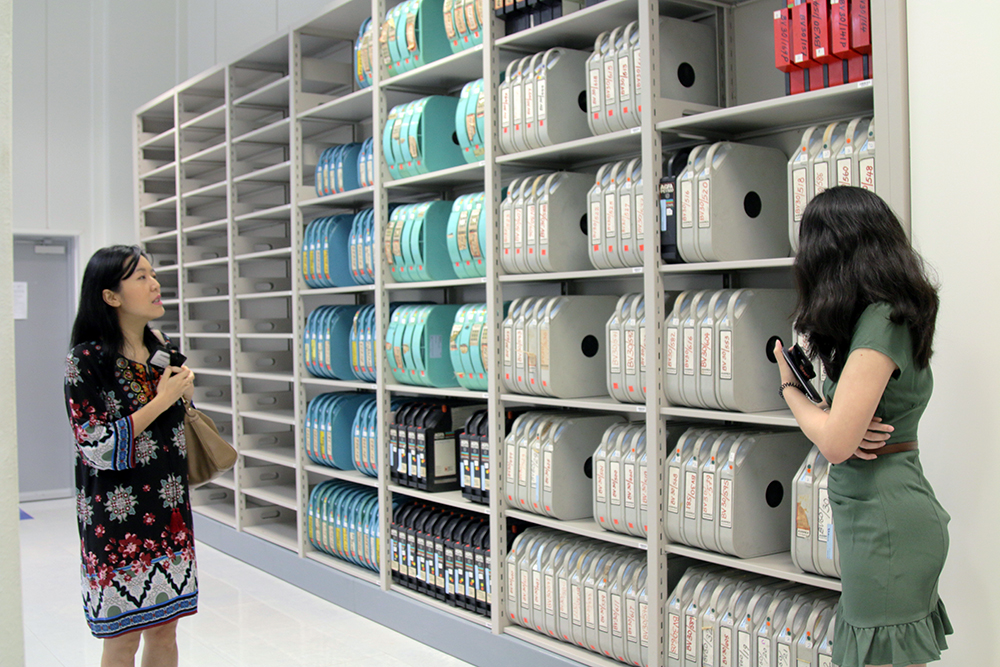 The AV Repository, where AV records are stored appropriately and securely for posterity.
The AV Repository, where AV records are stored appropriately and securely for posterity.
An archivist’s job is a varied one. Some of the things we do include appraising public and private records that are transferred to us, that is, assessing the records’ value for preservation based on certain criteria, handling queries and reproduction requests from the public, and monitoring the temperature and relative humidity levels in our repositories to ensure that they are at the optimal levels for preserving our records.
We also keep an eye out for significant or “live” television and radio programmes, which we record and keep.
Except for the two-inch AV tapes that are digitised by overseas vendors, the majority of AV records are digitised locally accordingly to international AV preservation standards.
5. What was the most interesting request you have received so far?
Once there was someone who came to check for footage of her husband who appeared on a dating show during his younger days.
[related_story]
6. Interesting. What is the oldest AV recording in NAS’s possession?
A pre-war footage of a Peranakan family and wedding celebrations filmed in 1940.
Our oldest sound recording is from 1903.
7. What are the most common requests NAS receives?
NAS receives a wide range of requests, ranging from researchers requesting for access to archival records for publications, exhibitions or documentaries to general members of public looking to trace their family histories. Additionally, we also provide services to search for school and marriage records, which may be required for legal and official purposes.
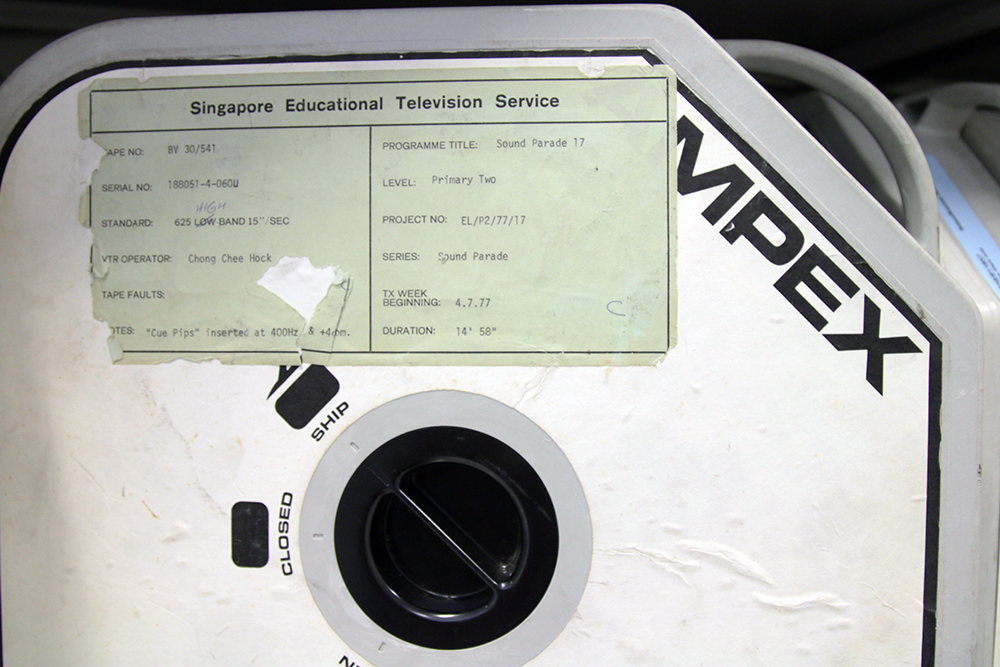 A prelude to the Curriculum Development Institution of Singapore's (CDIS) programmes, the Educational Television Service programme was first broadcast on 30 January 1967.
A prelude to the Curriculum Development Institution of Singapore's (CDIS) programmes, the Educational Television Service programme was first broadcast on 30 January 1967.
8. Are you a hoarder in real life?
Yes, I still keep some of my primary school worksheets.
9. So, your job is a real roller-coaster ride emotionally?
One thing that troubles me is when someone asks us if we have a record of an event, and we don’t. Either someone never made a record of it, it was not kept by the creator or it simply ‘fell through the gaps’ over the years.
Conversely, when there is a record of something today, it means someone saw its significance and made the decision to keep it years ago. This person may not have been an AV archivist – it could perhaps have been the person who made the recording -- but without proper storage conditions, and in Singapore’s humid climate, these recordings are prone to deterioration. If not checked, this is another record that will eventually be lost to us. Hence, it is the AV archivist’s job to identify these at-risk recordings, get them safely transferred to the controlled climate of our repositories, manage their timely digitalisation and successfully preserve them for future generations.
This is especially important in today’s digitalised world when it is just as easy to create new recordings, as it is to forget about them or think they are not worth preserving – how do you decide what to keep, when there are just so many records? And that’s where an AV archivist comes in.
Think about it this way: For SG50, we received many requests for footage showing Singapore’s development since 1965. Fifty years from now, people will be looking for these records again, and also those records created since 2015. We want to be able to tell them, “Those recordings you were looking for? Yes, we have all of them.”
Because long ago, someone made the decision to keep these records.
10. What are some of the things in the archives that fascinate you personally?
The original 1959 recording of Majulah Singapura, which has been put online.
It was the official song of the City Council of Singapore until we gained self-government in June 1959.
Growing up, I heard stories of my parents participating in Malaysia Day and National Day Parades. It’s hard to believe, but this was a generation that sang three different anthems during their time in school.
When we started assembling recordings of all the National Day Parades a few years ago, I had the opportunity to watch the 1967 parade. As each contingent marched past City Hall, I marvelled at the knowledge that, somewhere in the sea of faces, was my father, and he was surrounded by the parents and grandparents of many other Singaporeans today, too.
This made me realise that records are not only important as an official account of Singapore’s development over the years, but often also hold very personal memories for the everyday Singaporeans who witnessed these developments. In preserving our country’s history, we are also preserving the memories and experiences of its people.
Then there is Berita Singapura, a series of news magazine films produced in the 1960s by the then-Ministry of Culture. Each segment was usually a few minutes long, and covered topics that showed Singapore’s social and economic development during that period.
And also Sounds of Yesteryear, an initiative to showcase our collection of pre-World War II sound recordings.
Examples include early folk songs, orchestral pieces, Malay dramas, and Chinese operas in different dialects. One song, Goreng Pisang, is about a goreng pisang seller extolling the virtues of her fried bananas in song.
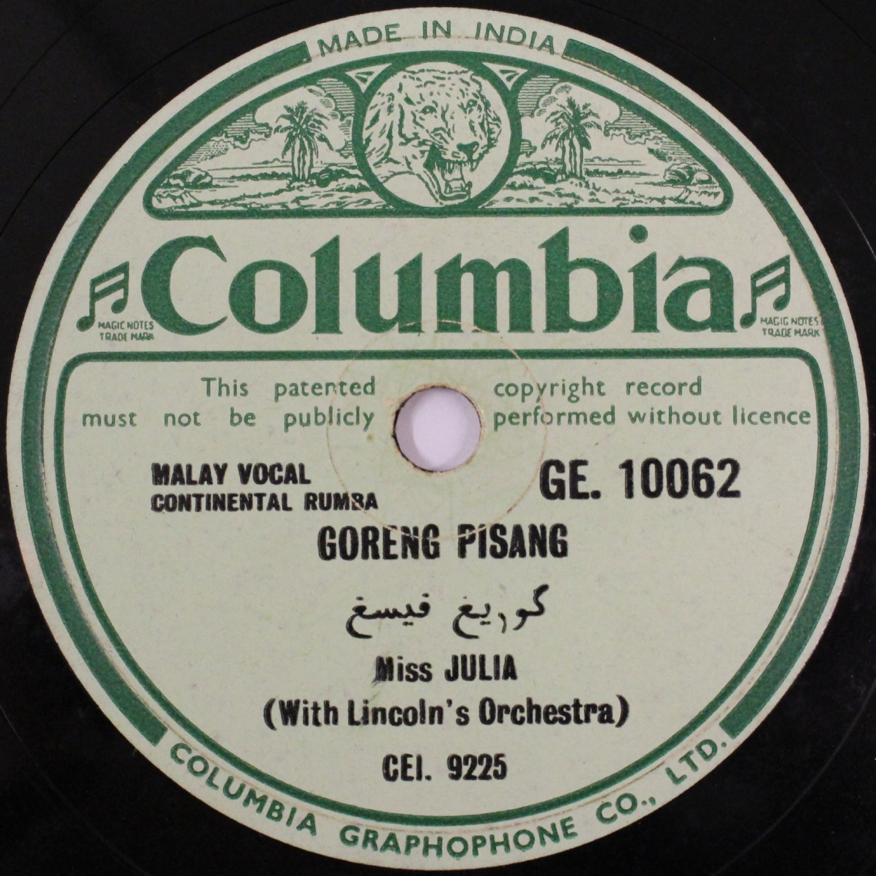 You can listen to this sound recording on the Audiovisual and Sound Recordings microsite at www.nas.gov.sg/archivesonline/audiovisual-records/.
You can listen to this sound recording on the Audiovisual and Sound Recordings microsite at www.nas.gov.sg/archivesonline/audiovisual-records/.
NAS, an institution under the National Library Board, is the official custodian of archived materials of national and historical significance, and works towards making Singapore’s history more accessible to everyone.
The building is home to records including more than 90,000 Audiovisual and Sound Recordings, 265,000 Maps and Building Plans, 4,703 Oral History Interviews, 5 million Digital Photographs, 7,000 Posters, 49,000 Speeches and Press Releases, and 50,000 Straits Settlements, Overseas and Private Records.
Researchers can look forward to improved computer terminals and microfilm machines with higher-resolution viewing in its revamped Archives Reading Room by early 2019, when the revamp is completed.
This sponsored post is brought to you by NAS which safe keeps Singapore’s memories and items, and maybe one of yours too.
If you like what you read, follow us on Facebook, Instagram, Twitter and Telegram to get the latest updates.
